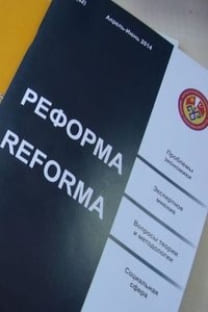BUSINESS ENVIRONMENT IN A TRANSITION ECONOMY AND ITS IMPLICATIONS ON BUSINESS OPPORTUNITIES IN KYRGYZSTAN: ANALYSIS AND RECOMMENDATIONS
Öz
Since its independence from the Soviet Union in 1991, Kyrgyzstan has undergone a substantial transition period marked by major reforms in the cultural, socio-political, legal, and economic environment. These developments have turned Kyrgyzstan into one of better investment destinations in Central Asia. Yet, Kyrgyzstan has not been able to attract enough foreign direct investments needed for its development of a sustainable economy based on a strong free economy with lots of businesses. In reality, numerous promising business areas exist in the country along with risks. This paper examines the opportunities and challenges awaiting multinational firms in Kyrgyzstan and recommends proactive strategies that will help them succeed in this transition market
Anahtar Kelimeler:
Transition Economy, Business Environment, Foreign Direct Investment, Multinational Firms, Kyrgyzstan
___
Abazov, R. (1999). Economic migration in post-Soviet Central Asia: The case of Kyrgyzstan. Post-Communist Economies, 11 (2), 237-253.Ahrari, E. (2003). The strategic future of Cen- tral Asia: A view from Washington. Journal of In- ternational Affairs, 56 (2), 157-166.
Dana, L. P. (2000). Change and Circumstance in Kyrgyz Markets. Qualitative Market Research, 3 (2), 62-77.
Engvall, J. (2007). Kyrgyzstan: Anatomy of a State. Problems of Post-Communism, 54 (4), 33- 45.
Klawonn, W. E. (2001). Some Observations on the Legal and Regulatory Environment for SME’s in Central Asia. Paper presented at the 2001 Conference on SME Finance in Central Asia, Tash- kent.
Kshetri, N. (2010). Business Perceptions of Regulative Institutions in Central and Eastern Europe. Baltic Journal of Management, 5 (3), 356- 377.
Lee, C. Y., & Meltem, T. (2008). Transition Economy and Its Impact on the Kyrgyz Business Environment: Analysis and Recommendations. Journal of International Management Studies, 3 (1), 177-186.
Lee, C.Y., & Meltem, T. (2007). Doing Busi- ness in Kazakhstan: Challenges, Opportunities and Suggestions. Journal of Global Business Man- agement, 3 (1), 109-119.
Luthans, F, and Ibrayeva, E. (2006). Entrepre- neurial Self-Efficacy in Central Asia Transition Economies: Quantitative and Qualitative Anal- yses. Journal of International Business Studies, 37 (1), 92-110.
Oleynik, I. S., Alexander, N., & Cherepanya, K. (Eds.). (2004). Kyrgyzstan: Country Study Guide. Washington, DC: International Business Publications.
Pomfret, R. (2003). Economic performance in Central Asia since 1991: Macro and Micro Evi- dence. Comparative Economic Studies, 45, 442-465.
Spechler, M. C. (2003). Crouching Dragon, Hungry tigers: China and Central Asia. Contem- porary Economic Policy, 21 (2), 270-280.
Stewart, R., & Weldon, S. (2002). Kyrgyzstan. New York: Odyssey.
The World Bank Group (2012). Doing Busi- ness in Kyrgyz Republic 2012. The International Bank of Reconstruction and Development and World Bank. Washington DC., U.S.A. March 2013
- ISSN: 1694-5158
- Yayın Aralığı: Yılda 2 Sayı
- Başlangıç: 1999
- Yayıncı: Kırgızistan Türkiye Manas Üniversitesi
